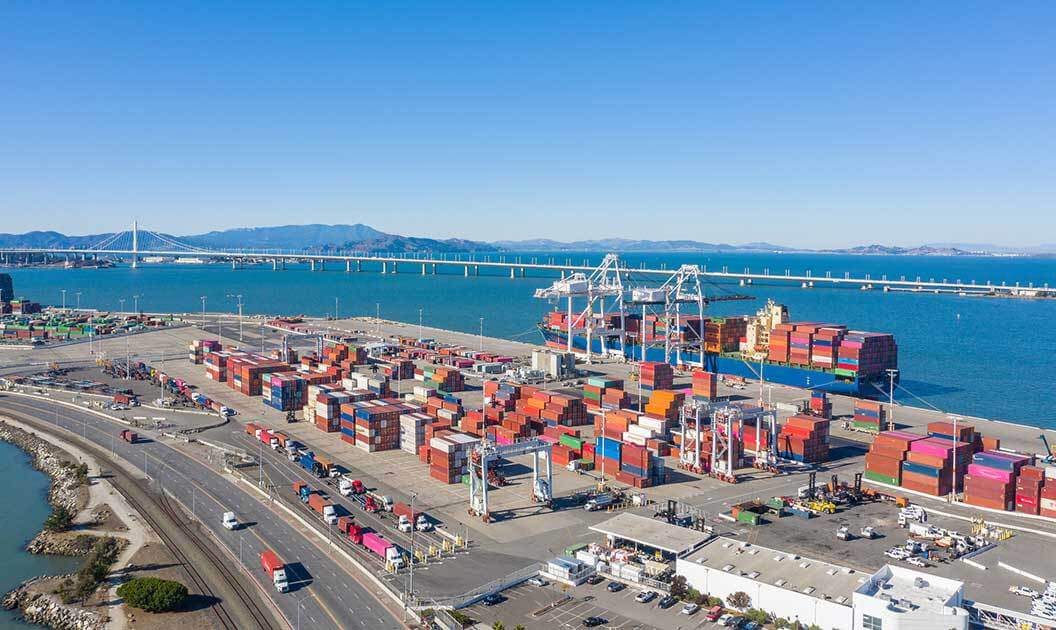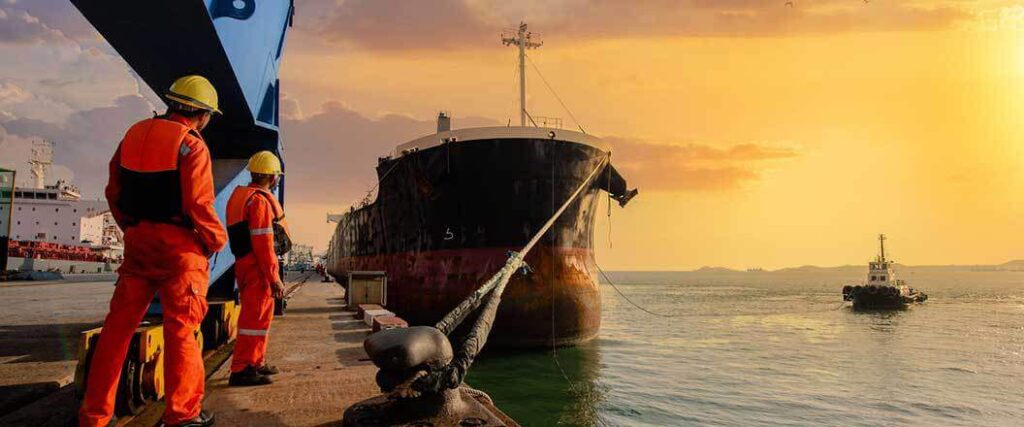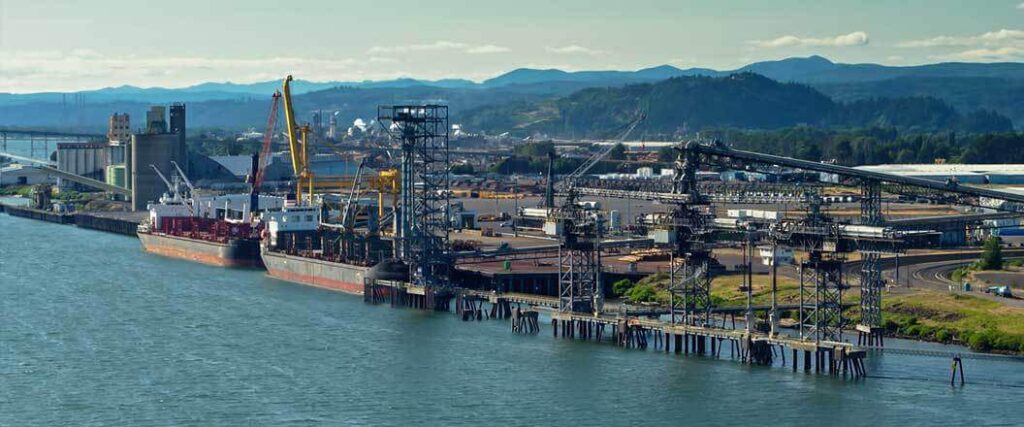
The International Longshore and Warehouse Union (ILWU) and the Pacific Maritime Association (PMA) reached an agreement on June 14 that will bring West Coast port slowdown to an end.
Although specific details about the new deal haven’t been released yet, both parties are expected to ratify the changes soon. This will provide a new six-year contract for the thousands of longshoremen working in ports from California to Washington.
Negotiations were assisted by the Acting U.S. Labor Secretary Julie Su, who was sent by President Joe Biden in an effort to help both parties reach an agreement.
Businesses and logistics providers impacted by the longshoreman slowdown, which impacted 29 total West Coast ports, can now look-forward to a return to normal operations. The timing is particularly important to importers counting on goods from Asia, and China in particular.
A recent drought affecting Central America has made passage through the Panama Canal difficult. The canal became critically important during previous West Coast port congestion issues. It had become the choice route for shippers looking to use East and Gulf Coast ports as alternates.
The dynamics of international shipping can be complex, particularly in times of labor disputes. Currently, the U.S. West Coast is experiencing a longshoreman slowdown that has significant implications for the import and export industry.
Companies that rely heavily on international and domestic logistic services are appropriately concerned. That’s why USA Customs Clearance is here to keep you in the know and help you find workable solutions.
Key Takeaways:
The vast import and export economy currently connecting the world is supported in a large way by the millions of longshoreman, or dockworkers, employed at ports around the world. These workers are often the unsung heroes of the freight and logistics industry for the role they play in keeping goods flowing in and out of the country.
Unfortunately, for as important as the role is, it’s not without dangers and disadvantages. In recent years, longshoremen have dealt with a wide variety of issues that have made the job more demanding than ever.
As recently as October 2021, workers at the Port of Los Angeles in California staged a slowdown in protest of dangerous working conditions. In that year, workplace accidents and fatality rates recorded at the Port of Los Angeles were higher than the national average across other ports.
At the time, steps were taken to try to improve working conditions and a greater west coast port slowdown was avoided.
As of June 2023, there are concerns over a similar slowdown. This time, the major concern is over the recently announced wage increases. It has been a hot button issue since the previous union contract expired in July 2022.
The current proposal is to raise wages by $1.56 per hour, which impacts workers differently based on their current roles.
Here’s the basic breakdown:
The conflict comes from how this compares to the current inflation rate in California, which is hovering at about 7.5%. In other words, despite the increase in the amount workers would earn, they are still earning less than before when compared to the increased costs of living.
Longshoremen in California have been some of the most vocal. Most of the state, and the Los Angeles area in particular, already have a high cost of living when compared to other areas in the country.
Some of these workers are already struggling in terms of earning because work schedules remain inconsistent and don’t always provide full-time hours.
The deal covers over 22,000 workers along the west coast. The labor negotiations on pay and other contract matters are being handled by the Pacific Maritime Association (PMA) and the International Longshore and Warehouse Union (ILWU).
The PMA represents the companies running the terminals employing the workers. Both ILWU and PMA have been urged to find a solution by federal, state, and local officials to support a return to normal operations.
The current contract talks have been taking place for 13 months, since the old contracts expired in July. Needless to say, many are growing increasingly frustrated with the proceedings.

The workers represented by the ILWU in the current negotiations are employed by various port terminals along the U.S. West Coast.
The top west coast ports being impacted by worker slowdowns and interruptions in the last week are:
The combined value of products that flow in and out of these ports is measured in billions of dollars. According to California’s Legislative Analysts’s Office (LAO), the state’s ports account for about 40% of all containerized shipments that enter the country. It also happens to handle about 30% of U.S. export traffic.
When these ports get backlogged, impacts can ripple across the supply chain on a global scale. In the past, west coast port slowdowns have forced major retailers to shift cargo to east and gulf coast ports to avoid overcrowded areas.
Any labor strikes can have a significant impact on a variety of economic sectors, including shipping and logistics. The exact impact will vary based on the duration and scale of the strike, the specific industry or company involved, and the response of other market participants.
When major shipping ports are involved, such as those in California and Washington, logistics industries experience almost immediate effects. While no official strike has been declared, slowdowns still have a negative impact.
The areas most likely to see negative impact are:
Knowing what areas are most impacted may help you plan ahead. At USA Customs Clearance, we have experience dealing with industry slowdowns resulting from labor shortages and overcrowded ports. Beyond just providing information, we can help you realize solutions.
Slowdowns are intentional. A longshoreman’s main job involves the loading and unloading cargo from the ships are port. When terminal operations struggle, delays are inevitable. Delays in handling then ripple into other transport modes.
The Port of Long Beach rail systems, along with others on the West Coast, are operated by Berkshire Hathaway and Union Pacific. To avoid having their trains stuck at a port with cargo, Union Pacific actually announced that it would pause shipments to at least three terminals in Los Angeles/Long Beach.
While it might not be stuck at the port terminal, the goods will end up remaining in the railcar unless a different terminal at another port becomes an option.
Supply chain disruptions are nothing new to many who already weathered the height of the pandemic lockdown.
For those who are new in the industry and have been able to enjoy relative shipping security, prepare for the following challenges:
The positive aspect here is that many companies and businesses now have backup plans to help minimize the damaging effects delays have on the supply chain.
Unfortunately, some of these strategies, such as lean logistics, are focused on not having a large amount of extra goods anywhere.
The most significant effect of a longshoremen slowdown for most people is the increase in various costs. There are fees and penalties across multiple facets of the logistics and shipping operations.
Slow operations often mean more and increased expenses in the following areas:
The frustrating part of these fees for many businesses are the fact that they can be penalized for disruptions that are out of their control. Demurrage and storage fees are a prime example of this.
Others, such as rerouting costs, the result of finding alternative solutions and avoiding ports where slowdowns are taking place.

Knowing that port congestion is likely can only prepare you so much for the problems likely to follow. A longshoreman slowdown in the busiest port in the United States is a big deal, but not impossible to survive.
If you have learned from delays that resulted from the COVID-19 pandemic, you may have invested time in some of the following solutions:
These solutions do require something of a long-term investment. Starting on these projects as an immediate solution to a possible longshoreman slowdown isn’t likely to provide immediate relief.
For those looking for current solutions, you can look into:
You may not be able to completely avoid the negative effects of the current events going on, but with the right strategies, you can come through safely on the other side. The goal is to survive until key negotiations and sticking points have been resolved.

Concerned about a slowdown affecting your West Coast imports?
Our 45 Minute Licensed Expert Consulting Will Help You Find Solutions.
As we navigate the uncertain waters of a longshoreman slowdown, it's essential to have a reliable partner by your side. USA Customs Clearance is dedicated to guiding you through these challenging times. We bring a wealth of knowledge and experience to the table, helping businesses like yours maintain smooth operations in the face of supply chain disruptions.
At USA Customs Clearance, we offer:
Call us at (855) 912-0406 for a risk-free quote. We look forward to partnering with you in your journey towards uninterrupted, efficient import operations.
 Copy URL to Clipboard
Copy URL to Clipboard

Google is changing how it surfaces content. Prioritize our high-quality guides and industry-leading coverage in search results by setting usacustomsclearance.com as a preferred source.
Add your first comment to this post